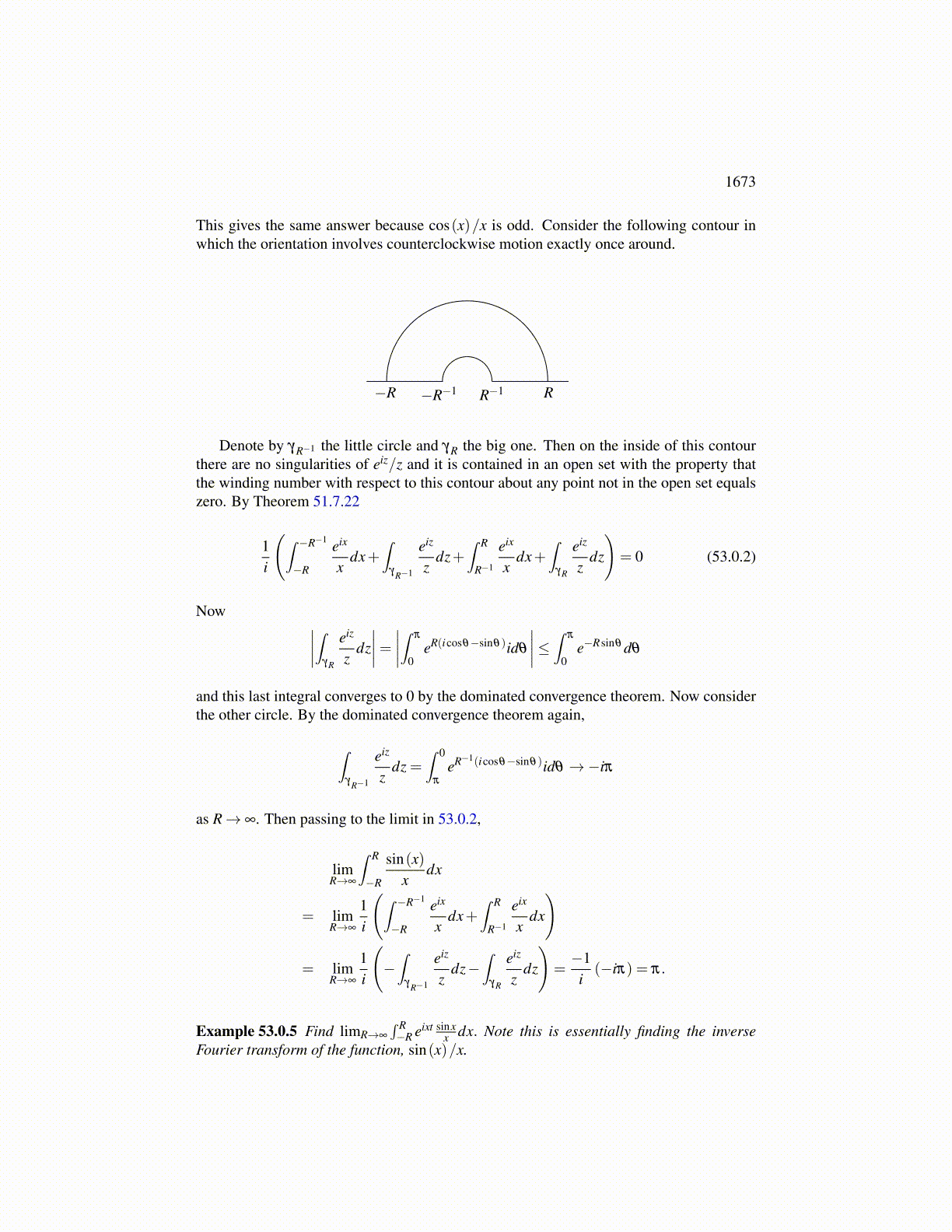
Chapter 53
ResiduesDefinition 53.0.1 The residue of f at an isolated singularity α which is a pole, writtenres( f ,α) is the coefficient of (z−α)−1 where
f (z) = g(z)+m
∑k=1
bk
(z−α)k .
Thus res( f ,α) = b1 in the above.
At this point, recall Corollary 51.7.20 which is stated here for convenience.
Corollary 53.0.2 Let Ω be an open set and let γk : [ak,bk]→ Ω, k = 1, · · · ,m, be closed,continuous and of bounded variation. Suppose also that
m
∑k=1
n(γk,z) = 0
for all z /∈Ω. Then if f : Ω→ C is analytic,
m
∑k=1
∫γk
f (w)dw = 0.
The following theorem is called the residue theorem. Note the resemblance to Corollary51.7.20.
Theorem 53.0.3 Let Ω be an open set and let γk : [ak,bk]→ Ω, k = 1, · · · ,m, be closed,continuous and of bounded variation. Suppose also that
m
∑k=1
n(γk,z) = 0
for all z /∈Ω. Then if f : Ω→ Ĉ is meromorphic such that no γ∗k contains any poles of f ,
12πi
m
∑k=1
∫γk
f (w)dw = ∑α∈A
res( f ,α)m
∑k=1
n(γk,α) (53.0.1)
where here A denotes the set of poles of f in Ω. The sum on the right is a finite sum.
Proof: First note that there are at most finitely many α which are not in the unboundedcomponent of C \∪m
k=1γk ([ak,bk]) . Thus there exists a finite set, {α1, · · · ,αN} ⊆ A suchthat these are the only possibilities for which ∑
nk=1 n(γk,α) might not equal zero. There-
fore, 53.0.1 reduces to
12πi
m
∑k=1
∫γk
f (w)dw =N
∑j=1
res( f ,α j)n
∑k=1
n(γk,α j)
1673